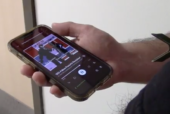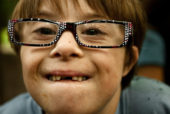Over a year ago, the COVID-19 pandemic caused all school campuses to close down as teachers and students switched over to virtual learning.
COVID-19 created a huge disruption of schooling. According to Education Week, school building closures during the spring semester of the 2019-20 school year affected 50.8 million public school students.
Since then, campuses have slowly started reopening for in-person classes, though many have limited the number of students who can attend at one time. Governor Gavin Newsom’s office says 86% of schools in California have reopened for in-person classes or “hybrid learning,” referring to a schedule where students attend in-person classes some of the time while also offering some classes virtually
Closures of campuses and social isolation have affected many students in a big way but specifically those who are living in poverty. According to Edutopia, a mental health crisis emerged when students lost access to the services schools offered.
Experts and parents say the pandemic has had a huge effect on the social skills, mental health, and academic progress of the K-12 students.
Greg Knotts, an education professor at California State University, Northridge said, “this year people have settled into a certain degree of complacency about the delivery of instruction through the virtual medium.”
While Knotts suggested some are excited by online learning, he said most students have not been able to make as much academic progress as they should.
Many students have thrived during the virtual learning and face-to face environment while other students have not.
Christian Perez, a social worker in the Pasadena Unified School District, works with students of all ages. His youngest student is a third grader and his oldest is a high school senior. Perez said that he has gotten to see the whole spectrum of experiences with distance learning. Some of his students find the social aspects of school difficult, and have had a positive experience in online classes.
“They don’t have that face-to-face anxiety level of interaction that they had before,” Perez said. “We also saw the other downside where the kids that needed that one-on-one time academically or learning wise actually suffered a lot through virtual learning.”
Many students have been adapting to the in-person class environment despite still being in the middle of a pandemic.
Jenny Hontz is an advocate for Speak Up Parents. For months, her group has advocated for districts to offer the in-person learning option. But Hontz said right now in the Los Angeles Unified School District, middle and high school students’ only have the option to return to campus to attend Zoom classes in a single classroom for the entirety of the day.
“We have seen a very low number of families opt in,” Hontz said. “Only 7% of high school students in LAUSD are back on campus.”
The majority of students are currently still in virtual learning. Elementary school students are back in-person five days a week for three hours in instruction. Hontz said more than 30% of families in elementary school have sent their children back.
President Joe Biden proposed $130 billion back in February for school reopenings in his $1.9 trillion COVID-19 relief bill. All of this money would go towards helping pay for more staff to have smaller class sizes and more learning opportunities for students who have not been doing well.
“I think it’s time for schools to reopen safely, ” Biden said during an interview on CBS.
Hontz noted that in more affluent communities on L.A.’s westside, parents are sending kids back to school at higher rates than in lower-income communities such as South Los Angeles and Southeast Los Angeles.
Hontz has a son in fifth grade who has navigated a challenging experience during the pandemic. She said he has been learning how to operate independently.
“It has been very difficult as a parent to manage and oversee his education,” said Hontz.
Is there any upside to students returning to campuses?
“Most of my clients have had a positive experience going back in person,” Perez said. “They really missed their friends and some kids did not like online learning.”
This show was reported by the following team:
- Beatrice Anoh
- Elizabeth Campus
- Justin Gonzalez
- Alfonso Henry
- Jordan Henry
- Ava Lange

 Tweet this Video
Tweet this Video Share on Facebook
Share on Facebook Share via E-mail
Share via E-mail

